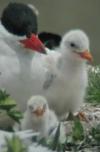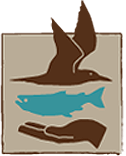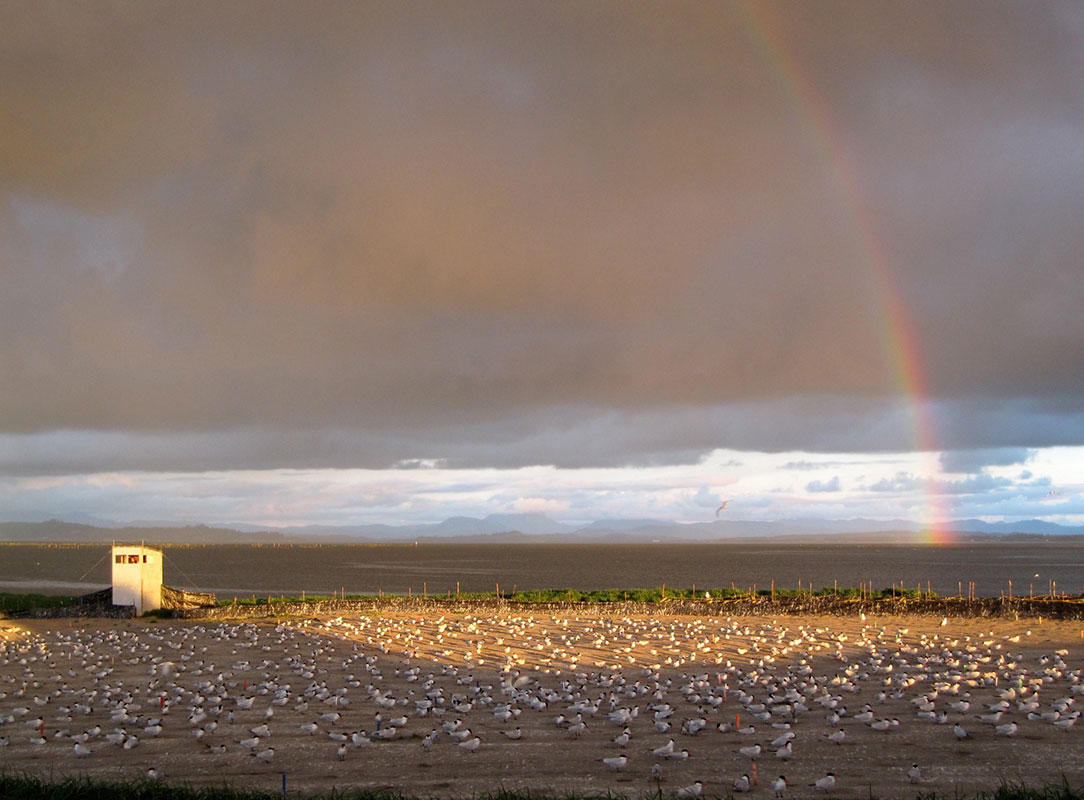 Avian Predation Synthesis Report
Avian Predation Synthesis Report
Beginning in 1997, numerous research, monitoring, and evaluation (RM&E) studies have been conducted to assess the impact of predation by Caspian terns (Hydroprogne caspia), double-crested cormorants (Phalacrocorax auritus), and other native piscivorous colonial waterbirds on the survival of Endangered Species Act (ESA)-listed salmonids (Oncorhynchus spp.) from the Columbia River basin (CRB). As part of this work, well over 50 technical reports and 40 peer-reviewed scientific publications have been prepared that covered a wide range of topics regarding avian predation in the CRB (see www.birdresearchnw.org). In general, these studies investigated the nesting ecology of piscivorous colonial waterbirds, and their predation impacts on fish of conservation concern. The studies of the ecology of piscivorous colonial waterbirds have largely focused on nesting locations, colony sizes (number of breeding adults), nesting success (number of fledglings produced), foraging ecology, and inter-colony movement and dispersal patterns within the CRB and throughout the Pacific Flyway. Studies of the impacts of avian predation, on the other hand, have mostly focused on diet composition (proportion of different prey types consumed) and the number and percentage of available prey consumed (predation rates) by piscivorous waterbirds nesting at various colonies in the CRB. This long-term research program has identified predation by piscivorous colonial waterbirds at some breeding colonies as a factor that limits the survival of some ESA-listed salmonid populations in the CRB. Consequently, addressing concerns over avian predation rates has become a component of the Biological Opinions and other plans for restoration of ESA-listed salmonids issued by the National Marine Fisheries Service (NMFS) for management of the Columbia River Power System.
Based on results from earlier studies, the U.S. Fish and Wildlife Service (USFWS), the U.S. Army Corps (USACE), and the Bureau of Reclamation (BOR), with direction from the NMFS, developed and implemented three different management plans to reduce avian predation rates on juvenile salmonids from some of the largest breeding colonies of piscivorous waterbirds in the CRB: Caspian tern and double-crested cormorant colonies on East Sand Island in the Columbia River estuary and the Caspian tern colonies on Crescent Island in McNary Reservoir and Goose Island in Potholes Reservoir in the Columbia Plateau region. The primary goal of management was to reduce predation rates on ESA-listed salmonid populations by reducing the number of birds nesting at each of these four colony sites. All four colonies targeted for management had formed and expanded since 1980 and, while not implicated in declines of salmonid populations in the CRB, had been identified as factors limiting the recovery of some ESA-listed populations. Management initiatives implemented at Caspian tern colonies in the CRB were primarily non-lethal approaches (i.e. passive and active nest dissuasion), whereas management of the large double-crested cormorant colony on East Sand Island used a combination of lethal (i.e. culling and egg-oiling) and non-lethal (i.e. active nest dissuasion and reduction of nesting habitat) strategies. As part of the two management plans for Caspian terns, alternative nesting habitat was created or enhanced at various locations outside the CRB (i.e. interior Oregon, northeastern California, and southern San Francisco Bay) for nesting Caspian terns displaced from the managed colony sites at East Sand, Crescent, and Goose islands. No alternative nesting habitat was provided as part of the management plan for double-crested cormorants nesting on East Sand Island.
In addition to the managed breeding colony sites on East Sand Island, Crescent Island, and Goose Island, a number of other breeding colonies of Caspian terns and double-crested cormorants, as well as colonies of other species of piscivorous waterbirds, such as California gulls (Larus californicus), ring-billed gulls (L. delawarensis), glaucous-winged/western gulls (L. glaucescens x occidentalis), and American white pelicans (Pelecanus erythrorhynchos), are present in the CRB. Some of these gull and pelican colonies are quite large and previous research indicates that they may consume substantial numbers of available salmonids under certain conditions. While no gull or pelican colonies are currently managed in the region, data on colony locations, colony sizes, diet composition, and smolt consumption rates were determined for some colonies in some years and are presented herein.
The primary goal of this report, “Avian Predation on Salmonids in the Columbia River Basin: A Synopsis of Ecology and Management,” is to assemble and summarize results from previous published and unpublished studies of avian predation in the CRB and to present results from retrospective analyses of data from previous studies to identify long-term patterns and trends. Results of these analyses are vital for assessing the efficacy of management initiatives to reduce predation impacts on ESA-listed juvenile salmonids by Caspian terns and double-crested cormorants in the CRB and to inform an adaptive approach that ensures that management objectives are fully achieved and sustained into the future. These analyses are also essential for evaluating how management actions have and will continue to affect populations of piscivorous colonial waterbirds in the CRB and throughout the Pacific Flyway, populations of native species that are protected by the Migratory Bird Treaty Act. Finally, we hope that this report will serve as a comprehensive repository of results from RM&E of avian predation during 1997–2019 and provide a single-source document on the topic for regional managers, stakeholders, researchers, and the public.
This synoptic report is organized into 10 chapters and four appendices. Chapters 1–5 describe the results of management of colonies of piscivorous colonial waterbirds in the CRB to reduce predation rates on ESA-listed salmonids. Chapter 1 focuses on management of Caspian terns nesting in the Columbia River estuary and how management actions have affected predation on juvenile salmonids as well as the breeding population of Caspian terns in the estuary. Chapter 2 examines the management of Caspian terns in the Columbia Plateau region and how management actions have influenced predation rates on salmonid smolts and the breeding population of Caspian terns in the Plateau region. Chapter 3 summarizes the results of efforts to provide alternative nesting habitat for Caspian terns outside the CRB to attract them away from the CRB concurrent with the managed reduction of Caspian tern nesting habitat and displacement of breeding Caspian terns from the CRB. Chapter 4 describes the nesting and foraging ecology of double-crested cormorants in the Columbia River estuary and how management actions have affected that ecology and the impact of cormorant predation on survival of salmonid smolts in the estuary. Chapter 5 details an investigation into how predation rates on salmonid smolts by Caspian terns and double-crested cormorants nesting in the Columbia River estuary have been influenced by the locations of nesting colonies within the estuary. Chapter 6 summarizes what is known about colonies of piscivorous waterbirds in the CRB that have not been subjected to management to reduce predation rates on juvenile salmonids, including information on the distribution and size of colonies and what is known about their impacts on smolt survival.
Chapters 7–10 explore the effects of avian predation on the mortality and survival of salmonids of conservation concern from the CRB. Chapter 7 describes the cumulative impacts of predation by piscivorous colonial waterbirds on survival of smolts from selected salmonid populations in the CRB. Chapter 8 investigates whether avian predation on selected populations of salmonids is primarily an additive or a compensatory source of smolt mortality, which influences the extent to which managed reductions in avian predation would enhance smolt and smolt-to-adult survival. Chapter 9 focuses on the question of whether avian predation on juvenile salmonids in the CRB is density-dependent by investigating functional responses in per capita predation rates. Finally, Chapter 10 examines the factors that influence the susceptibility of salmonid smolts to avian predation in the CRB, including intrinsic (e.g., smolt condition) and extrinsic (e.g., river discharge/spill) factors. Appendix A provides details on the standardized methodologies used to collect project data; Appendix B lists the sizes and smolt predation rates associated with the various colonies of piscivorous waterbirds in the CRB; Appendix C describes an analytical procedure for estimating future predation rates on juvenile salmonids by Caspian terns nesting on East Sand Island in the Columbia River estuary; Appendix D is an annotated bibliography of key references cited in the report.
The management of avian predators in the CRB as an approach to enhance the survival of salmonids of conservation concern has caused considerable controversy within and among the various management agencies, stakeholder groups, publics, and scientists with interests in the CRB ecosystem. Anadromous salmon and steelhead are generally considered an invaluable natural resource in the Pacific Northwest and an icon of the quality of life for the residents of the region. Most managers consider the “4 Hs” (harvest, habitat, hydrosystem, and hatcheries) to be the main factors responsible for salmonid declines and the listing under the ESA of 13 of 20 populations of salmonids from the CRB. The magnitude of smolt losses to predation by some piscivorous waterbirds in the CRB, however, surprised many fisheries managers in the region and prompted swift action by management agencies to reduce those losses. Consensus among managers, scientists, and stakeholders on the science and policy of whether and to what extent avian predation should be managed, however, has been elusive. Some have viewed management of avian predation as a diversion of limited resources from addressing the root causes of salmonid declines (i.e. 4 Hs). These divergent viewpoints have put the science of avian predation on salmonids in a political hotseat, where one side views avian predation as a major threat to salmonid populations from throughout the CRB and the other views any attempts to reduce avian predation rates on CRB salmonids through management as a misguided effort destined to provide little in the way of benefits toward salmonid recovery, while raising conservation concerns for some protected populations of avian predators.
We have attempted to provide an objective synopsis of the topic of avian predation on juvenile salmonids in the Columbia River basin during 1997–2019 in this 10-chapter report, while acknowledging the controversy surrounding the issue. Previous management policy for avian predators in the basin has been shaped by political forces that reflect the diverse values of stakeholders and the differing resource management mandates of federal, state, and tribal agencies. Although we do not expect the scientific results described in this report to change the values and political views of stakeholders, we believe that the best policies are built on a solid foundation of science that informs management. We hope that this report will make a substantive contribution to that foundation.
- D.D. Roby, A.F Evans, and K. Collis (editors)
Click here to see full report



